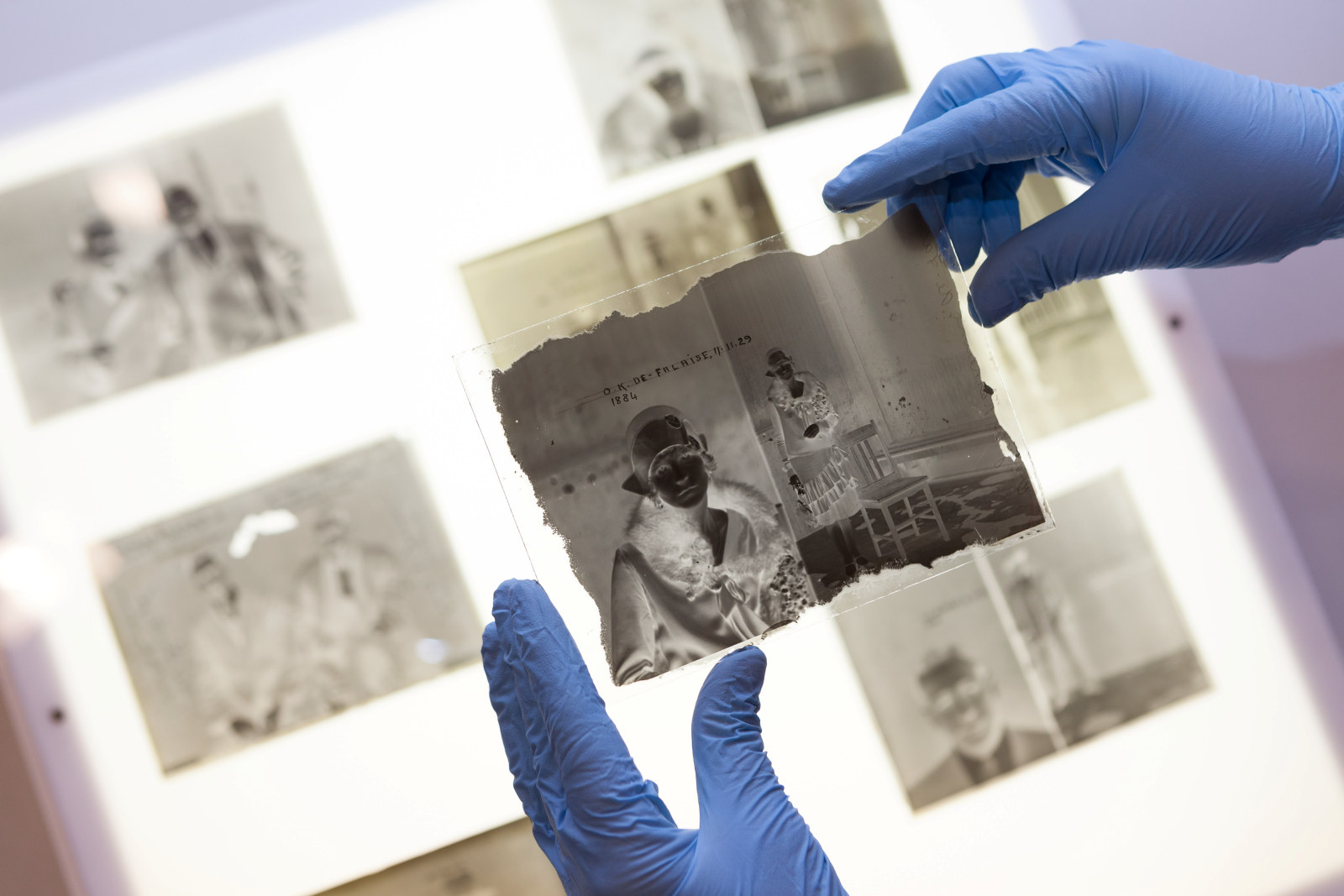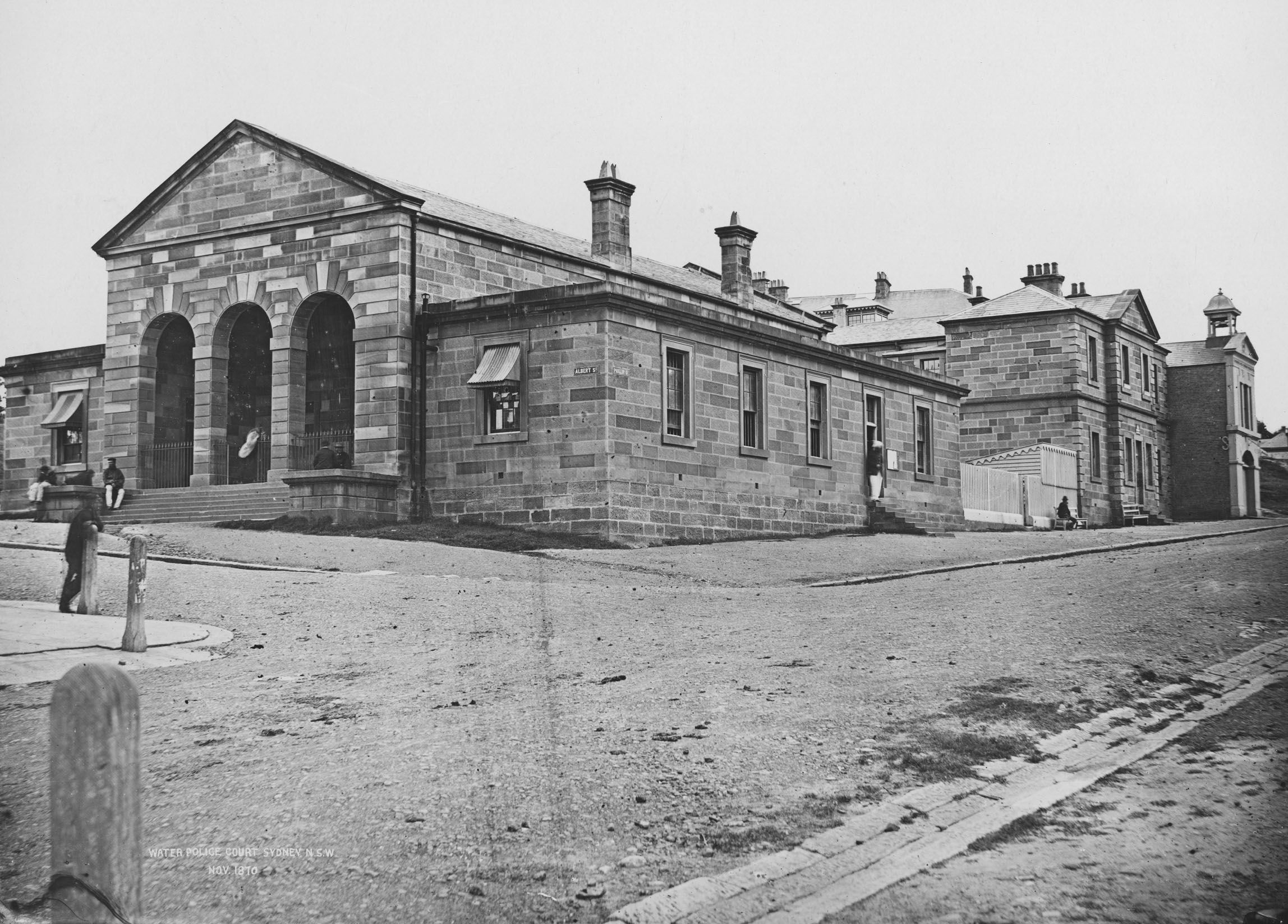The 1910 Collection
Beating steadily at the heart of the Justice & Police Museum is the 1910 Collection, which celebrates its centenary this year. Objects from this collection are displayed throughout the Justice & Police Museum complex, but particularly in a black-walled room known as the Crime Museum.
The 1910 Collection, so-called because it first went on display above the stables at the Redfern Police Barracks on 25 August 1910, was put together by detectives as a museum of criminal memorabilia. Partly inspired by Scotland Yard’s Black Museum (1878) and intended for teaching purposes, it was assembled to illustrate to new recruits the workings of the criminal mind and expose a variety of devious and secretive technologies used to commit crime. Over time, the 1910 Collection also absorbed evidence from various famous cases, and a number of significant items of early police uniform and equipment. One journalist who reporting on an early viewing of the collection captured its intriguing and sinister atmosphere:
It would be an excellent demonstration room for a professor in crime. A small space, not over 20ft. square, and, at first sight, rather like an armorer’s or a carpenter’s shop. Sprinkled along the shelves about you are all sorts of little things, the possession of anyone of which would get an archangel arrested in George-street.
Unknown writer, Daily Telegraph, 19101
Gambling devices, knives, knuckledusters, sword-sticks, opium-smoking kits, counterfeiting tools, skeleton keys, jemmies and wrenches used for burglary, and death masks taken from bushrangers who had been executed - all could be contemplated at close range. As the years went by, objects from criminal cases that challenged and changed policing in New South Wales were added. Samples of soil and botanical specimens gathered in the forensic investigation of the Graeme Thorne kidnapping (1960); a zinc-lined bath in which the Pyjama Girl’s body was preserved for ten years after her death, and a painted plaster facial reconstruct ion created to aid in her identification (1934-44); the spade that dug the shallow graves of Cyril Moxley’s victims (1931); and the cricket stump used by jail escapees Kevin Simmonds and Leslie Newcombe to batter warder Cecil Mills to death (1959) all found their way into the collection.
Important documents include the first bulky leather-bound photographic register of imprisoned offenders (1871), its pages covered with sepia images reminiscent of a Dickensian rogues gallery. Warrants include those for the arrest of Ned Kelly and his gang (1879) and the last self-proclaimed bushrangers in New South Wales, the Governor brothers (1900). These official records sit alongside more ordinary objects - a battered-looking pair of men’s shoes in brown leather, for example. At first glance they appear innocuous. Turn them over and the curious, dug-out heels are revealed. Patrick O’Sullivan had been on the run after committing armed robbery in Campsie on 21 May 1933.
When he was caught and escorted from Melbourne back to Sydney five days later, police found phosphorus concealed in the heel cavities of his shoes. O’Sullivan admitted that he had intended to use the poisonous element to commit suicide while he was in custody. There is also a dental cast taken from a pair of suspects who left a half-eaten bar of chocolate at the scene of a robbery (1933). The bite impression left in the chocolate matched the cast, and the sweet-tooth earned a spell in prison.
An innovative soul created one of the many covert yet lethal objects in the collection. This small plastic ring, with a razor inset where a row of precious stones might normally have been fixed, would have been a dormant accessory, worn without drawing attention (or blood) until the vital moment. Around 1954 the ring was taken from a 17-year-old youth arrested for illegally using a motorcycle. Possession of the ring earned the additional charge of ‘carrying a cutting instrument’. Other oddities in the collection include a handcrafted tool for making impressions of horseshoes, allowing the user to create false horse’s hoof-prints. The single device surviving in the collection begs the question: was there another one? It is not hard to imagine a wily criminal fleeing a robbery, a fake horseshoe attached to each foot to throw pursuing police off the scent.
The 1910 Collection emphasised criminal practices, behaviour and psychology. A hundred years on, its fascinating and sometimes macabre objects continue to challenge and intrigue us, raising issues about why crime is committed and how society as a whole should respond to it effectively.
This article was written by Holly Schulte and former Curator Caleb Williams and originally published in the winter 2010 Insites magazine.
Note
Daily Telegraph 26 August 1910 p9
Published on
Related

Alexander Riley, legendary Aboriginal police tracker
The remarkable talents of Aboriginal trackers who worked for NSW Police in the 20th century are featured in a display at the Justice & Police Museum

Glass-plate photography
The collection of glass-plate negatives held in the State Archives and Justice & Police Museum are endlessly fascinating and revealing

Come in spinner!
Gambling in Australia is regulated by the state and some types of gambling are illegal. The game Two-up, with its catch cry of ‘Come in Spinner!’, is legal only on Anzac Day and only in some states

Museum stories
Gritty business
Immerse yourself in Sydney's chilling criminal past in this unique water-front museum of policing, law and disorder – with its grizzly collection of underworld weapons along with tales of mayhem and lawlessness, aptly described as an educational resource befitting a 'professor in crime'